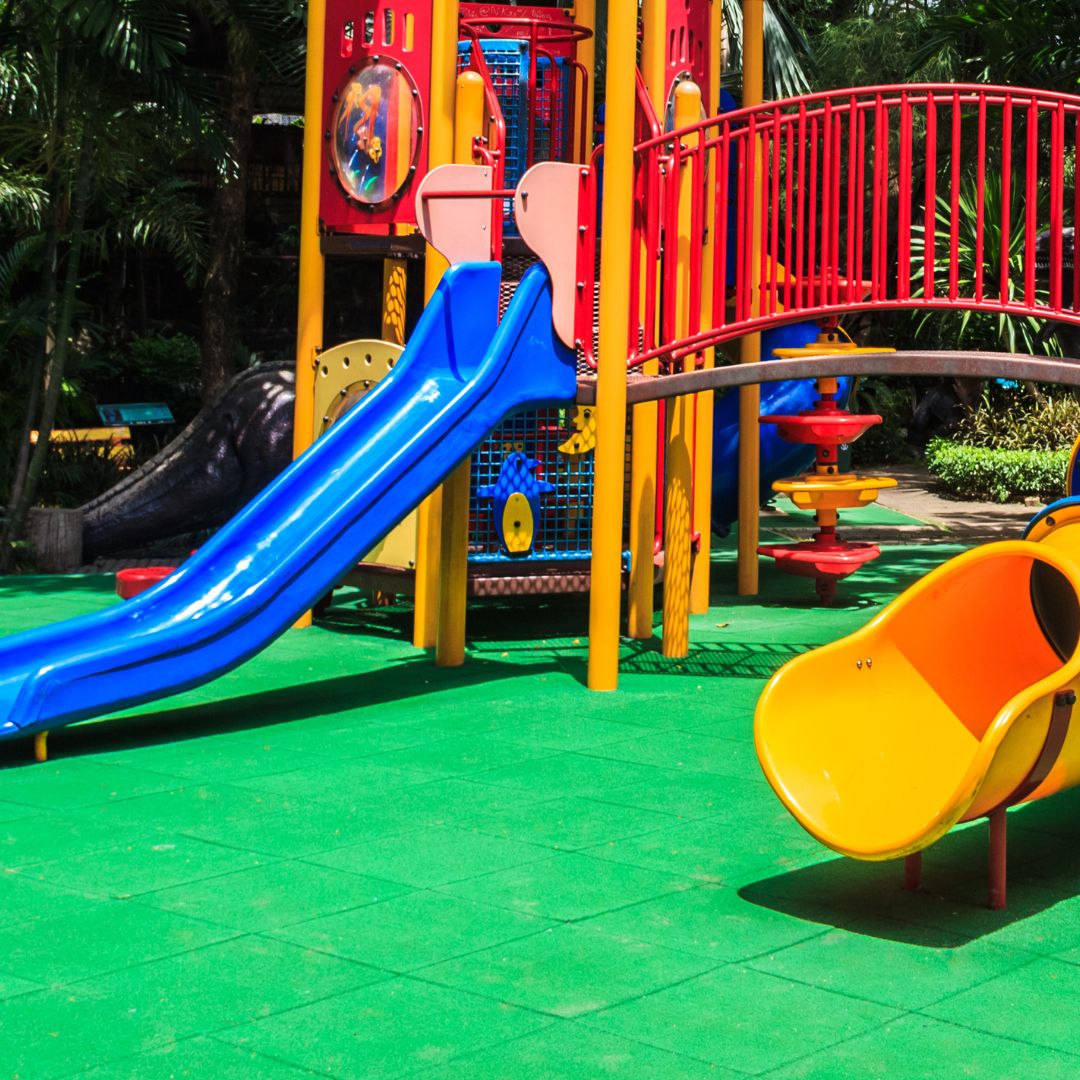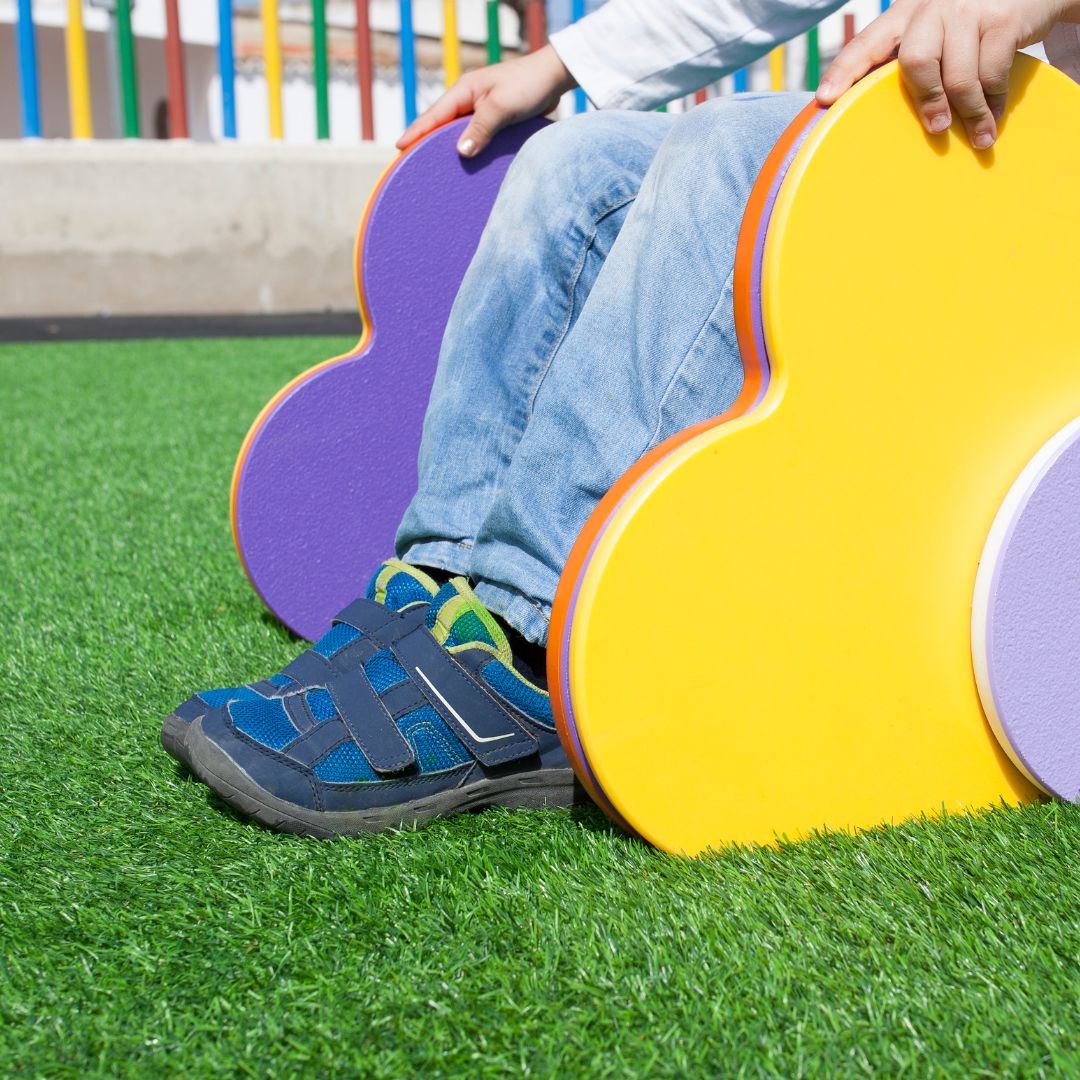
In the last article, we discussed the various loose-fill materials used for playground surfaces. For some playgrounds, loose-fill materials make a suitable playground surface solution. However, loose-fill materials have some drawbacks, which may make you wonder what else is available.
Parks and recreation agencies looking for more accessible, consistent surfacing may use unitary materials for their playgrounds.
This article looks at some options for unitary surfacing, how they perform, and the maintenance needed to keep them in the best condition.
Unitary Materials
Unitary materials refer to types of bound elements that form flat, seamless playground surfaces. When installed properly and maintained, unitary materials make the playground more accessible for those with mobility issues. The surface also decreases the risk of unseen dangerous foreign objects--like broken glass.
Loose-Fill vs. Unitary Surfaces
When deciding on the best type of playground surfacing, you’ll probably reach this crossroads: loose-fill or unitary surfaces. Both have their unique set of advantages and disadvantages.
Let’s do a quick rundown:
Loose-Fill Surfaces
Pros:
- Easier to install (may not require professional installation)
- More affordable to install
- Good for drainage
- Good protection from falls (when enough is installed)
- Easy to replenish
- Give parks a natural look
Cons
- Can be messy and displaced easily
- Foreign objects are easily hidden in fill
- Not as accessible
- More post-installation labor and maintenance costs
Unitary Surfaces
Pros
- Less overall maintenance
- Not as messy
- Foreign objects are easier to spot
- Generally more accessible
- Can last longer than loose fill
- Variety of colors and designs for a unique look
Cons
- More expensive to install
- May require professional installation
- Can harden over time in cold, dry conditions
- May experience drainage issues
- Not as resilient to extreme temperature changes
As you can see, there may not be a clear winner.
If your budget allows for the higher upfront costs, unitary playground surfaces are worth considering. Here are some of the most common unitary surfaces.
Types of Unitary Playground Surfaces
Rubber Tiles

As the name suggests, rubber tiles are small interlocking squares of bonded rubber that can be used on concrete, asphalt, or treated rock surfaces. They come in various colors, textures, and thicknesses for a more interesting playground design.
Safety/Accessibility: Rubber tiles are designed to meet ASTM critical fall height requirements--as long as the subsurface gets prepared correctly.
Most tiles are resistant to bugs, mold, and fungi, which can be an issue with loose-fill surfaces.
Rubber tiles provide an excellent surface for those with mobility issues. If tiles warp or crack, however, it can affect the accessibility. Deformed tiles also can create tripping hazards.
Cost: The initial preparation and installation of rubber tiles are generally less expensive than other unitary surfaces. Yet it is still more costly than most loose-fill surfaces. Tiles can be cut and fit to conform with the playground design and other objects.
Durability: Rubber tiles can last about 10 years on average playgrounds when installed and cared for properly. One of the leading problems with rubber tiles is warping or separating when the subsurface changes. Also, fluctuations in temperature cause the rubber to expand and contract, eventually leading to deterioration.
Maintenance: Just like any unitary surface, rubber tiles need to be swept and regularly cleaned. Inspect the tiles regularly for damage, holes, or seam separations. During inspections, look out for curling at the edges.
Poured-in-Place (PIP) Rubber
Poured-in-place (PIP) rubber surfacing has a top layer generally made of Ethylene Propylene Diene Monomer or Thermal Plastic Vulcanized granules. Underneath the top layer, a recycled rubber cushion layer usually gets placed between concrete, crushed stone, or asphalt ground. PIP rubber comes in a variety of colors and offers the opportunity for interesting surface designs.
Safety/Accessibility: PIP rubber has consistent impact-absorbing qualities. The ASTM states just 4.5 inches of PIP surface can absorb the shock from a 10-foot fall.
This type of surface is ADA-compliant and gives level ground for those using wheelchairs or mobility devices.
Cost: PIP materials and installation are generally more expensive playground surfaces. Also, professionals must install it. Additional labor or expenses may be necessary to prep the surface.
Durability: PIP surfaces generally last about 10 years--longer with proper maintenance. In cold, dry climates, areas of the surface may harden. If this happens, a new layer of rubber can help address the issue.
Maintenance: Surfaces need regular inspections for cracking, wearing, and hard spots. Clean surfaces of dirt and debris regularly.
High-traffic playgrounds may require an additional top layer added over time. Spot repairs can also be made to keep maintenance costs lower.
Artificial Turf

Synthetic turf or artificial grass was created to look and (kind of) feel like grass but without all the maintenance. The fibers are typically made from polypropylene or polyethylene.
Safety/Accessibility: Properly installed artificial turf has several layers, including a backing, cushioning, drainage layers, and infill. The extra layers allow for good fall protection and shock absorption.
Firm turf is a good accessible option for wheelchairs or mobility devices.
Some artificial turf has the potential to harbor bacteria, so it’s important to see the manufacturer’s guidelines for cleaning and preventing bacterial growth.
Cost: The lifetime cost of artificial turf is relatively low. Prepping the area and installation, however tends to be expensive.
Durability: The average lifespan of artificial grass is between 8-15 years, depending on usage and weather conditions.
Maintenance: Artificial turf requires routine cleaning to remove dust, sand, and other organic matter accumulating in the fibers.
If turf needs repair, a section could be cut out and replaced with new turf. Your maintenance team can easily do minor repairs.
Unacceptable Playground Surfaces
Some playground surfaces are too dangerous to be considered due to the lack of shock absorption. According to the NRPA, unacceptable surfaces include concrete, asphalt blacktop, packed earth, and grass.
Concrete and asphalt can be useful surfaces to help make a playground more accessible. These hard surfaces should not be used directly under play structures. Serious injury or death could result from a fall.
Tips for Maintaining Playground Surfaces
This series gave some general maintenance guidelines for the specific types of playground surfaces. Let’s tie it all together to help create a maintenance plan for safer, longer-lasting playground surfaces.
- Conduct regular inspections: A regular playground inspection schedule and daily spot checks help the maintenance team detect hazards, wear and tear, and damage.
- Respond Promptly: When a surface issue gets noted, use an efficient work order system to help expedite the process and prevent more extensive damage.
- Set Up A Cleaning Schedule: Schedule routine cleanings based on the season and amount of traffic the playground gets.
- Follow the Manufacturer’s Guidelines: Check with the manufacturer to determine the best methods to clean and maintain the surface.
- Schedule seasonal maintenance based on the weather condition: Each season has unique conditions that can affect playground surfaces. Schedule maintenance tasks that coincide with seasonal issues (blowing leaves in the fall, checking drainage in the spring, etc.)
- Educate and involve playground users to report concerns: It never hurts to have extra sets of informed eyes looking out for hazards or damaged surfaces. Give these individuals an easy way to report issues to the maintenance team.
The Takeaway
With so many playground surfacing options available, it’s easy to get stuck trying to figure out which suits your assets best. Considering playground usage, installation cost, maintenance requirements, and durability is a good start in the decision-making process.
Loose-fill and unitary surfaces have unique advantages and disadvantages to review. We hope this series gave you a good jumping-off spot to make deciding a little easier.
